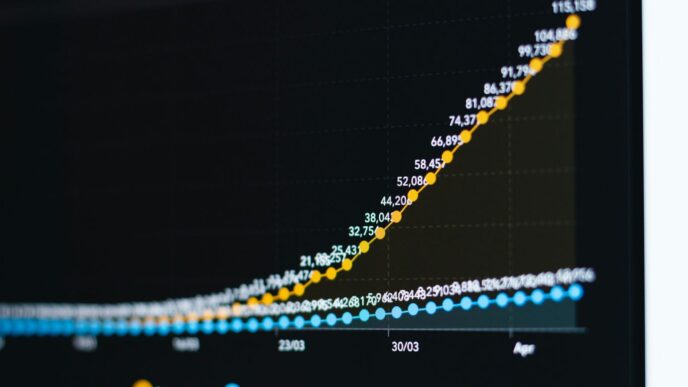As AI technology continues to advance, the legal landscape around it is becoming increasingly complex. In 2024, we saw a surge in lawsuits targeting AI developers, with many claiming violations of intellectual property rights. This article explores the latest trends in AI lawsuits, highlighting key insights that could shape the future of legal challenges in this evolving field.
Key Takeaways
- AI-related lawsuits are increasingly focusing on intellectual property rights, with many new legal theories emerging.
- Copyright infringement claims are still common, but plaintiffs are now also exploring trademark and unfair competition claims.
- The landscape of defendants is broadening, with newer AI developers and their investors becoming targets for lawsuits.
- State and federal laws are being tested in these cases, leading to a patchwork of legal challenges across different jurisdictions.
- As we look to 2025, expect more clarity on legal standards and an increase in class action lawsuits related to AI.
Emerging Trends in AI Lawsuit Filings
It feels like every week there’s a new AI lawsuit popping up. What’s interesting is how these lawsuits are evolving. It’s not just the same old arguments anymore. More plaintiffs filed complaints in 2024 than ever before. Plaintiffs of all kinds pursued claims against an increasingly diverse pool of defendants, including newer AI-developers and corporate investors in AI. Although many of those complaints focused on the core copyright and trademark infringement theories present in the earliest AI lawsuits, plaintiffs have begun diversifying their claims to include false advertising and unfair competition, along with other state-law causes of action. The most recent complaints also demonstrate that plaintiffs are learning from the struggles of those who filed suits before them and are modifying their strategies to avoid the same pitfalls.
Increased Intellectual Property Claims
At first, it was all about copyright. Did using copyrighted stuff to train AI break the law? Were the AI models spitting out things that were too similar to existing works? Now, things are getting more complex. We’re seeing more trademark claims, and even arguments about false advertising. For example, some media companies are saying that when AI makes up stuff and blames it on them, it hurts their brand. Also, some developers are being accused of lying about where their data comes from and whether they had permission to use it. It’s a bit of a mess, honestly. The New York Times opened the floodgates for corporate IP plaintiffs in the final week of 2023, filing a complaint against Microsoft and Open AI alleging they had trained their generative AI models using millions of The New York Times’ copyrighted works without permission. Since then, other corporations like The Daily News, The Chicago Tribune, Universal Music Group, Warner, Sony, Atlantic Records, The Intercept Media, and most recently Dow Jones have followed suit and filed similar claims.
Diverse Legal Theories
It’s not just copyright anymore. People are throwing everything at the wall to see what sticks. Think about it:
- Trademark dilution claims are on the rise.
- False advertising claims are becoming more common.
- State unfair competition laws are being used to try and get around some of the problems with federal copyright law.
For example, some YouTubers are using state laws to sue AI companies for using their videos without permission, since they never registered for federal copyright. Voice actors are also suing, saying that AI companies are cloning their voices without asking. It’s like everyone’s trying to find a new angle to attack from. These trademark claims are becoming increasingly common.
Expansion of Defendants
It used to be that the lawsuits only targeted the big AI companies like OpenAI and Meta. Now, anyone involved is fair game. New AI developers are getting sued left and right. But it doesn’t stop there. Plaintiffs are also going after the companies that invest in AI or provide them with resources, like Microsoft and Databricks. They’re arguing that these companies are helping the AI developers break the law and should be held responsible. As more companies begin to fund and provide critical infrastructure for AI projects going forward, they may become targets of plaintiffs pursuing this broader approach to naming defendants. Courts have yet to clarify how indirect infringement theories will apply in these cases, or just how broad plaintiffs’ claims might reach.
The Role of Copyright in AI Litigation
Copyright law is really important in the AI legal battles happening now. A lot of the early lawsuits against AI companies were about copyright. People claimed that using their copyrighted stuff to train AI models was a copyright violation. They also said that the AI models were making copies or new versions of their work that broke copyright laws. But, as courts started questioning some of these arguments, especially the ones about derivative works, plaintiffs started looking at other legal options.
Challenges in Proving Infringement
It’s not easy to win a copyright case against AI companies. There are a few big hurdles. One is showing that the AI actually used the copyrighted material.
- First, you need to have your copyright registered. In Millette v. OpenAI, Inc., one plaintiff couldn’t bring a direct copyright claim because they hadn’t registered their YouTube video. copyright registration is important.
- Second, you have to prove the AI used your specific work as training data. This is hard if the AI company doesn’t say what data they used. Some people try to use websites like "haveibeentrained.com" as evidence, but that’s not always reliable.
- Third, you have to show that the AI’s output is substantially similar to your copyrighted work. This can be tricky because AI-generated content is often different from the original.
Fair Use Defense Developments
AI developers often argue that using copyrighted material for training is "fair use." Fair use means you can use copyrighted stuff without permission if it’s for something like education or if it transforms the original work. AI companies say they transform the works into small bits of data to teach the AI, and that the contribution of any single work is small. Creators argue that AI is commercial and competes with their work. The U.S. Copyright Office is expected to release a report on how fair use applies to AI soon. We’re waiting to see how courts will rule on this, especially regarding how much weight they’ll give to transformativeness and commercialism. The initial rulings on AI developers’ core fair use defense could either open litigation floodgates or slow the stream of new cases and increase the pace at which existing cases are resolved.
Impact of Copyright Registration
Not having your work registered with the Copyright Office can really hurt your case. As mentioned earlier, you can’t even bring a federal copyright claim without it. This is a big deal for online creators, like YouTubers, who might not always think about registering their stuff. So, if you’re creating content that you want to protect, registering your copyright is a must. It’s a simple step that can make a huge difference if you ever have to go to court.
Trademark Issues in the Age of AI
Dilution vs. Infringement Claims
AI is throwing a wrench into traditional trademark law. It used to be pretty straightforward: if someone used your trademark in a way that confused customers, you could sue them for infringement. Now, with AI generating content, things are getting messy. Plaintiffs are increasingly arguing trademark dilution, claiming that AI-generated content is weakening the distinctiveness of their brands, even if there’s no direct consumer confusion. This is a higher bar to clear, as it requires proving the fame of the trademark, but it opens the door to lawsuits even when AI isn’t directly competing with the trademark owner. It’s like saying, "This AI thing isn’t stealing my customers, but it’s making my brand less special," which is a whole new legal battleground. The trademark claims are becoming more complex.
Case Studies in Trademark Conflicts
Let’s look at some examples. Imagine an AI chatbot that starts giving incorrect information about a company, but attributes it to a reputable news source. The news source could sue for trademark dilution, arguing that the AI’s "hallucinations" are damaging their brand. Or consider an AI that generates images using a company’s logo in a misleading way. These cases highlight the challenges of applying traditional trademark law to AI-generated content. Here’s a quick look at some potential scenarios:
- AI chatbot provides incorrect information about a company, attributed to a news source.
- AI generates images using a company’s logo in a misleading way.
- AI creates a product that is similar to an existing product, using similar branding.
Navigating Brand Protection
So, what can companies do to protect their brands in this AI-driven world? It’s not easy, but here are a few ideas:
- Monitor AI-generated content: Keep an eye on what AI is creating and saying about your brand. There are tools that can help you track mentions and identify potential trademark issues.
- Strengthen your trademarks: Make sure your trademarks are properly registered and protected. The stronger your trademark, the easier it will be to defend it.
- Consider AI-specific policies: Develop internal policies for how your company uses AI in marketing and advertising. Make sure these policies address trademark issues and ensure that AI-generated content doesn’t infringe on the rights of others. Think about software licensing implications too.
- Be prepared to litigate: If you find that AI is infringing on your trademark, be prepared to take legal action. This may involve sending cease-and-desist letters or filing a lawsuit. The legal landscape is still evolving, so it’s important to stay informed and be proactive. The unfair competition claims are also something to consider.
State Law vs. Federal Law in AI Cases

Utilizing State Unfair Competition Claims
It’s interesting how plaintiffs are trying to use state laws to get around some of the problems they’ve had with federal cases. For example, YouTube creators who didn’t register their work (which you need to do for a federal copyright claim) are using state unfair competition and unjust enrichment claims. They’re basically saying AI companies profited unfairly by using their content to train AI without asking. Courts are often skeptical, especially if the state law is too similar to copyright law, because federal copyright law can preempt state laws. This preemption issue is a key battleground.
Challenges with Preemption
Preemption is a big deal. If a state law gives rights that are basically the same as federal copyright rights, the federal law wins. This makes it hard for plaintiffs to use state laws to protect their work if it’s already covered by copyright. Voice actors, for instance, have sued AI companies for using their voices without permission, claiming it violates their state right of publicity. The success of these claims often hinges on whether the court sees them as distinct from copyright claims.
Variability Across Jurisdictions
One thing to keep in mind is that state laws vary a lot. What’s considered unfair competition in California might be different in New York. This means that the outcome of an AI lawsuit can depend heavily on where it’s filed. This variability creates uncertainty and can lead to forum shopping, where plaintiffs try to file their cases in the state where they think they have the best chance of winning. It also means that AI companies need to be aware of the different laws in each state where they operate. The rise of AI litigation is something to keep an eye on.
The Future of AI Lawsuits: Predictions for 2025
Anticipated Legal Clarifications
Okay, so where are we headed? Well, 2025 is shaping up to be a year where we might actually get some solid answers. The U.S. Copyright Office is expected to drop some guidance on fair use, which could be a game-changer. Plus, we’re waiting on court decisions that tackle some of the really tough legal questions. But, don’t expect everything to be crystal clear. Judges might disagree, especially since a lot depends on the specifics of each case – how the AI was trained, how it works, and all that jazz. It’s a bit of a legal maze, really. We might see some AI legal status finally defined.
Potential for Class Action Growth
Class action lawsuits? Yeah, those could be about to blow up. If AI developers can’t get the cases thrown out early, they might try to deal with the class certification stuff ASAP. Getting a class certified is a huge hurdle, especially when it comes to figuring out if everyone’s work was used in the AI’s output. If plaintiffs can’t clear that hurdle, a lot of these lawsuits might just fizzle out before they even get to the main arguments. It’s all about strategy, and the class certification issues are key.
Impact of Regulatory Changes
Regulatory changes are definitely something to watch. If lawmakers step in and shake things up, that could change everything. But until then, the legal battles over intellectual property are probably going to keep dragging on. And it’s not just in the U.S. – we’re seeing lawsuits pop up all over the world. So, unless there’s some major intervention, expect the AI litigation to continue for a while. The viability of intellectual property claims against AI developers will not be resolved in 2025. The table below shows the number of AI lawsuits filed in different countries:
| Country | Number of Lawsuits (2024) |
|---|---|
| U.S. | 50+ |
| Canada | 3 |
| Germany | 2 |
| U.K. | 1 |
| India | 1 |
International Perspectives on AI Litigation
Global Trends in AI Lawsuits
It’s not just a U.S. thing anymore. We’re seeing AI lawsuits pop up all over the globe. For a while, most of the action was happening in the States, probably because that’s where a lot of the big AI companies started. But now, other countries are getting in on the game. In late 2024, an Indian news company, Asian News International, actually sued OpenAI in India. Plus, there have been cases filed in Canada, Germany, and the UK. I bet we’ll see even more of this as time goes on, especially if the AI companies start winning cases in the U.S.
Cross-Border Legal Challenges
Dealing with AI lawsuits that cross borders can be a real headache. Imagine trying to figure out which country’s laws apply when the AI company is in one place, the data is stored somewhere else, and the people affected are all over the world. It’s a mess! You’ve got to think about things like:
- Which court has the power to hear the case?
- Which country’s laws should the court use?
- How do you even get evidence from another country?
- What happens if the judgments are different in different places?
- How do you enforce a judgment across borders?
These are tough questions, and there aren’t always easy answers. It’s going to take a lot of work to sort this out. The case of "Jiajia Luo v. Sogou Inc." share prices showed the implications of AI decisions on stock market dynamics.
Comparative Analysis of Jurisdictions
It’s interesting to see how different countries are handling AI lawsuits. Some countries might be more strict about trademark infringements or copyright than others. For example, some countries might have strong data privacy laws that could affect how AI companies use personal information. Other countries might be more open to the idea of "fair use" when it comes to using copyrighted material to train AI models. It really depends on the country, and it’s important to understand these differences if you’re dealing with AI lawsuits that involve multiple countries. Understanding these nuances is vital for success.
The Intersection of AI and Contract Law
Key Contractual Disputes
AI’s growing presence is creating some interesting contract law issues. It’s not just about software licenses anymore; we’re seeing disputes arise from AI’s role in various agreements. For example, if an AI system makes a mistake that leads to a breach of contract, who’s responsible? Is it the developer, the user, or the AI itself? These are the questions courts are starting to grapple with. The key is to have very clear language in contracts about AI’s role, limitations, and liability.
Implications for Software Licensing
Software licensing is getting a whole lot more complicated with AI. Think about it: you license software that uses AI. What happens when that AI generates something that infringes on someone else’s copyright? Or what if the AI doesn’t perform as expected? Standard software licenses often don’t cover these scenarios. We need to rethink how we license software that incorporates AI, including things like usage rights, data access, and performance guarantees. The case between Nuance Communications Inc. and IBM Corp highlights the importance of contractual clarity, even in AI’s shadow. It’s important to understand the AI legal revolution and its trajectory for success.
Lessons from Recent Cases
Recent AI-related cases are providing some valuable lessons. For instance, the "Jiajia Luo v. Sogou Inc." case showed how AI decisions can affect stock prices, highlighting the need for companies to be transparent about their AI strategies. Other cases are clarifying copyright and trademark issues in the AI space. Here are some key takeaways:
- Clarity is key: Contracts must clearly define AI’s role and responsibilities.
- Risk assessment is crucial: Companies need to assess the risks associated with using AI and allocate liability accordingly.
- Transparency matters: Disclose how AI is being used and its potential impact.
It’s a bit of a wild west out there, but these cases are helping to shape the future of AI and contract law. It’s important to monitor developments from the state to international level to get a sense of how ethical codes of conduct are evolving in the AI era.
Looking Ahead: The Road for AI Litigation
As we wrap up our look at AI lawsuits, it’s clear we’re just scratching the surface. 2024 was a whirlwind of cases, and it seems like 2025 will be just as busy, if not more. With courts still figuring out the rules, there’s a lot of uncertainty. Plaintiffs are getting smarter and more creative with their claims, which means AI developers need to stay on their toes. The legal landscape is shifting, and we can expect more twists and turns ahead. Whether it’s about copyright, trademarks, or new theories of liability, the fight isn’t over. So, buckle up—this is just the beginning of a long journey in AI litigation.
Frequently Asked Questions
What are the recent trends in AI lawsuits?
Recently, there has been a rise in lawsuits related to intellectual property issues in AI. New legal theories are being used, and more companies are being named as defendants.
How does copyright law affect AI litigation?
Copyright law plays a big role in AI lawsuits. One challenge is proving that a copyright was violated. Recent cases are also looking at how fair use applies to AI.
What trademark issues are arising with AI?
Trademark issues in AI include claims of dilution and infringement. Some companies are suing AI developers for harming their brand reputation.
What is the difference between state and federal law in AI cases?
State laws can sometimes be used in AI cases to bypass strict federal requirements. However, federal copyright laws often override state laws.
What can we expect for AI lawsuits in 2025?
In 2025, we may see more clarity in the law regarding AI. There could be more class action lawsuits and changes due to new regulations.
How do international laws impact AI litigation?
AI lawsuits are not just happening in the U.S. Other countries are also starting to file lawsuits against AI developers, which can complicate legal matters.












